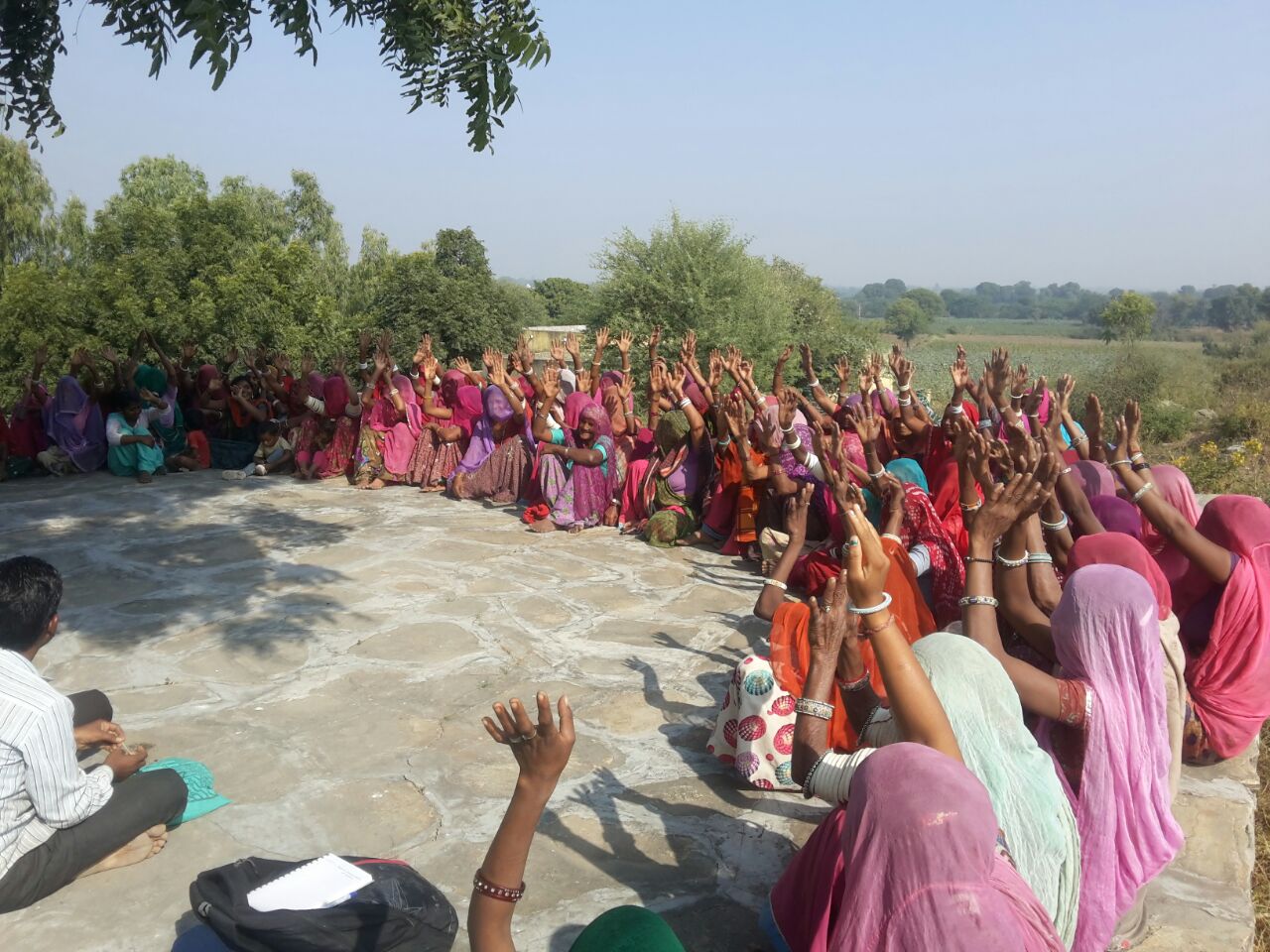The story of artists inspiring change

India is home to 16% of the world's population but only holds 4% of the world's freshwater resources.* Today, it is one of the countries most affected by climate change.**
*World Bank. Addressing groundwater depletion: Lessons from India, the world's largest user of groundwater, 2021. **Germanwatch.org. GLOBAL CLIMATE RISK INDEX 2021.
In India, while the groundwater resources are already under stress, climate change is adding to the strain, posing a major threat to hundreds of millions of people who are dealing with water scarcity. In South Rajasthan, groundwater exploitation has led to higher concentrations of fluoride in groundwater, something that many people are unaware of, and which poses a major threat to their health.
This is why Indian artists are leading a breakthrough in climate adaptation.
As part of the Rajasthan project in India, implemented by the Centre for microfinance (CmF), artists like Nand Lal are adopting the One Drop Foundation’s Social Art for Behaviour Change (SABC) approach to raise awareness around the issue of fluoride contamination, helping mitigate risks of exposure to this harmful element that is present in groundwater.
“Although there is no medicine to cure fluorosis, through our show we inform and mobilize community members to improve their dietary habits and conduct regular testing of their water sources.” - Nand Lal, artist
Developed around the context of South Rajasthan, the script involves local artists who sing songs, perform theatre, dance, and create puppet shows, and engage in other art forms such as Gavri. These performances have received a very positive response from community members, who recognize the health benefits that come from fetching water from a safe source for drinking and cooking.
“Before, we were not informed, and no one cared about the problem. Now, I have clearly understood that we should drink safe water and eat healthy to become strong and live a healthy life.” - Kiki Bai, project participant
Social art activities are helping the community identify safe and unsafe water sources and motivating them to only use water from safe sources. They are also helping communities understand how they can adopt healthy behaviours around water in their daily lives and initiating the process of doing so.
“I believe that through the medium of art, be it in any form say—dance, music, nukkad natak, puppet show—any kind of message can be easily conveyed (…), make its impression in the mind of a person, and inspire them to adopt behaviours promptly.” - Nand Lal, artist
Access to clean water is vital to climate resilience, and social art can help communities better understand these challenges, develop ways to support each other, and adapt to new realities.

